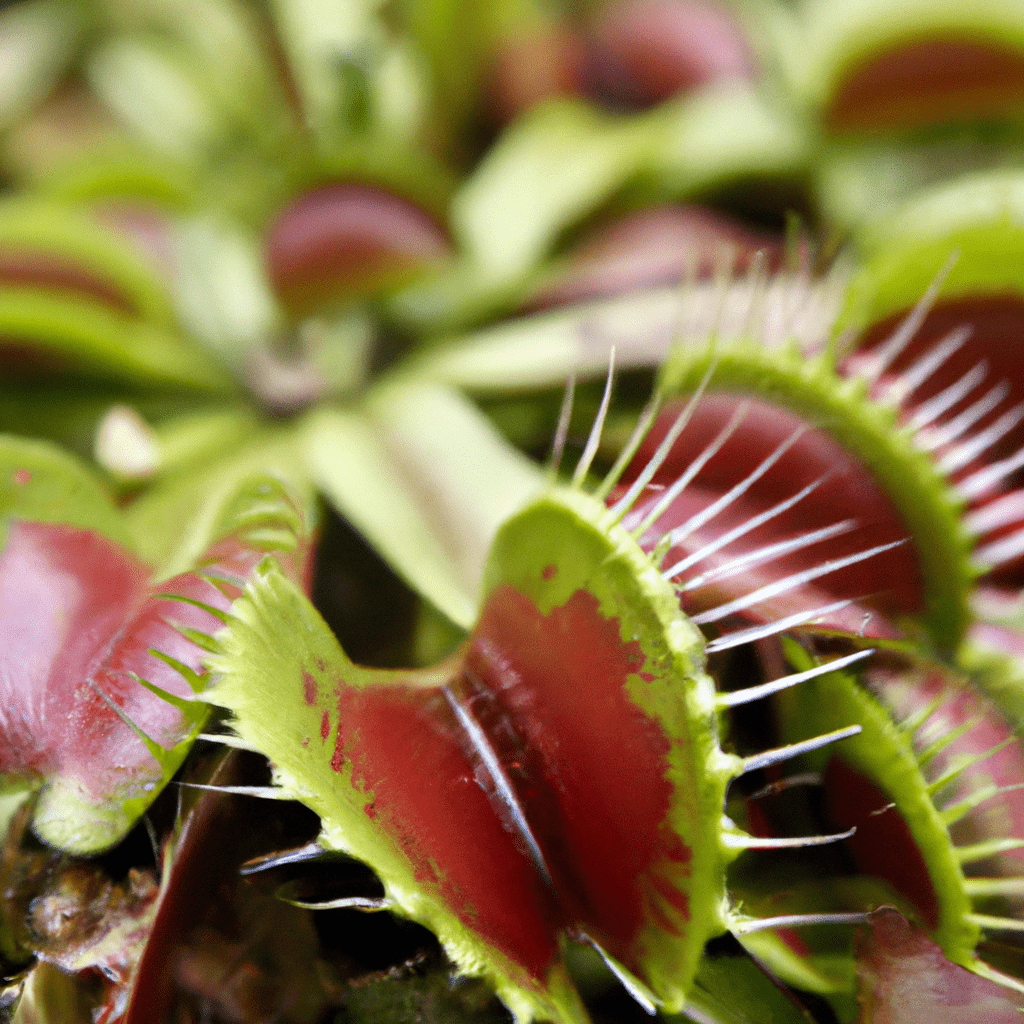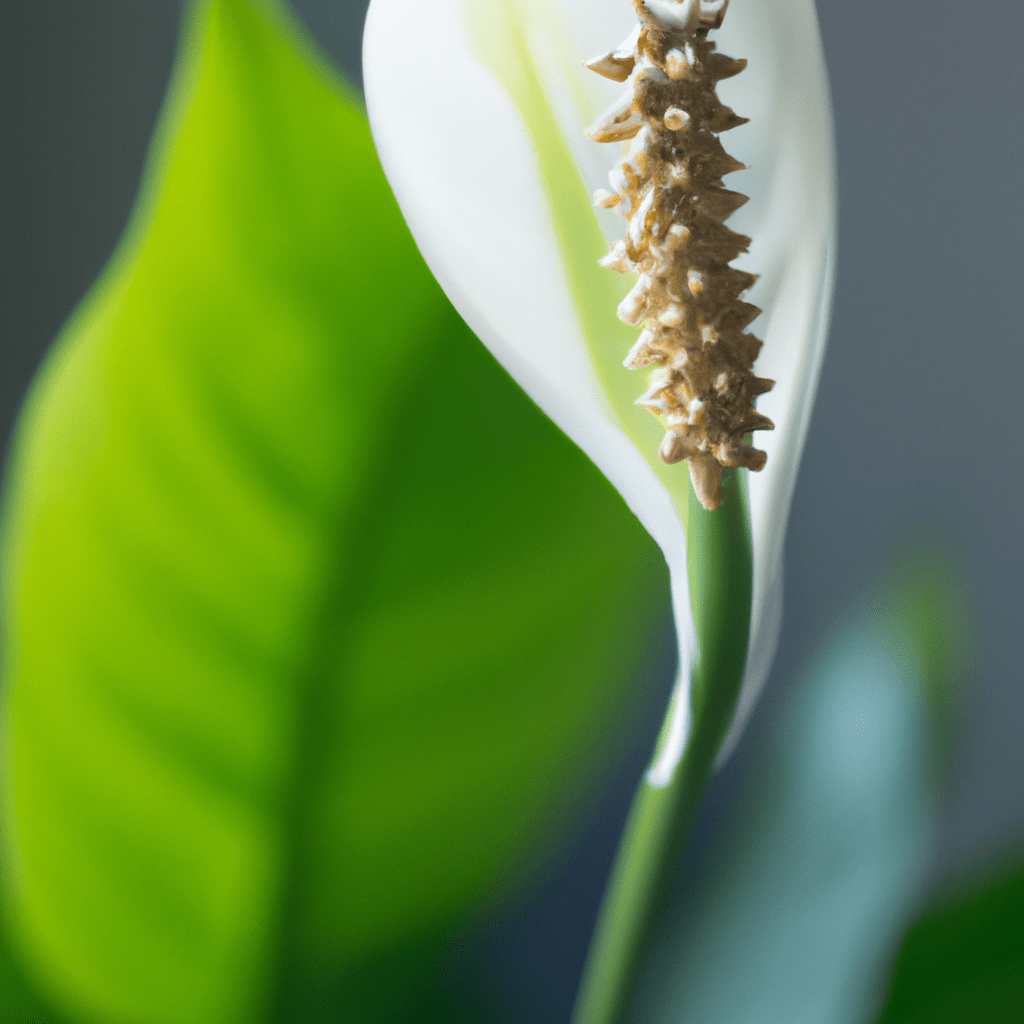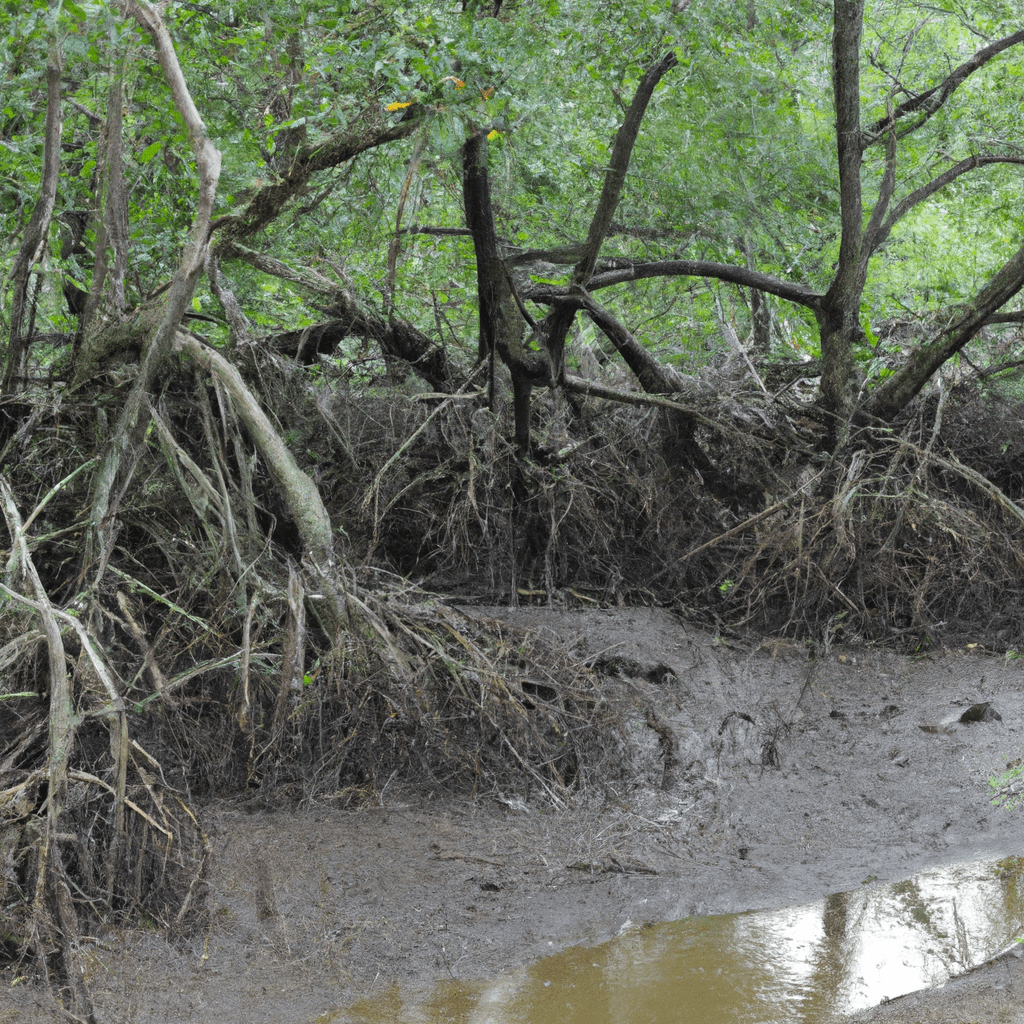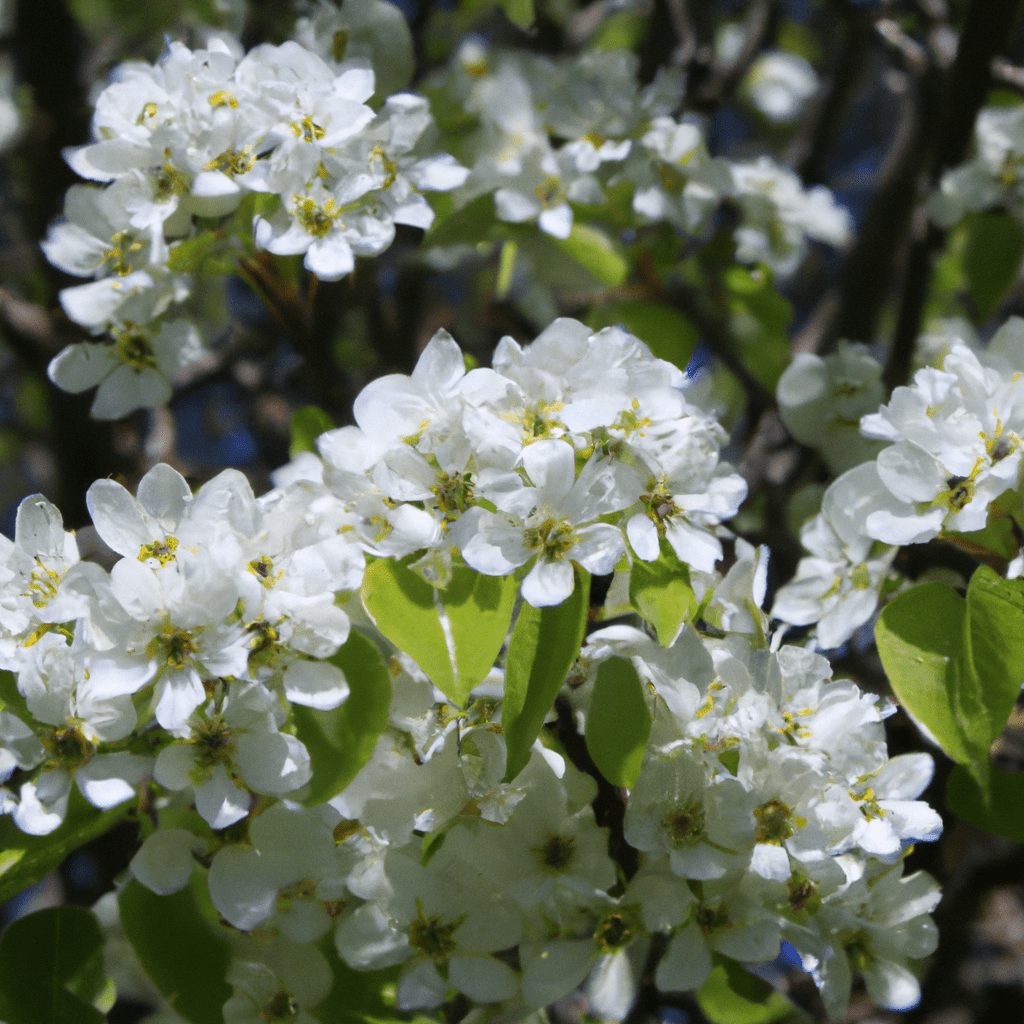The Venus Fly Trap Flower, with its captivating beauty and unique carnivorous nature, has long held a place of fascination among plant enthusiasts and curious minds. In this article, we will explore the intriguing world of the Venus Fly Trap Flower, delving into its native habitat, remarkable adaptations, and the captivating mechanisms it employs to capture its prey.
A Carnivorous Beauty
The Venus Fly Trap Flower, scientifically known as Dionaea muscipula, is a true marvel of the plant kingdom. Its enchanting beauty lies not only in its delicate, vibrant petals, but also in its remarkable ability to capture and digest insects. This carnivorous nature sets it apart from other plants, making it a captivating subject of study and admiration.
Enchanting Floral Structure
At first glance, the Venus Fly Trap Flower may appear as a typical flower, but a closer look reveals its intricate and unique structure. The flower consists of a central stalk adorned with vibrant petals, which serve to attract pollinators. However, it is the presence of specialized leaves, known as traps, that truly distinguishes this flower from its counterparts in the botanical world.
Deadly Beauty: The Venus Fly Trap Flower
The Venus Fly Trap Flower is not just a passive observer in the natural world; it is an active predator, ready to seize its prey. Each trap consists of two lobes joined by a hinge, forming a chamber that resembles an open mouth. The edges of the lobes are lined with sensitive trigger hairs, which act as the plant’s detection system, waiting for a sign of an unsuspecting insect’s arrival.
Native Habitat and Distribution
Natively found in the wetlands of North and South Carolina in the United States, the Venus Fly Trap Flower thrives in acidic, nutrient-poor soils. Its natural habitat includes boggy areas and swampy regions where the conditions are just right for its survival. However, due to its popularity, it is now cultivated in various parts of the world, allowing plant enthusiasts to marvel at its wonders.
A Curious Combination: Plant and Predator
The Venus Fly Trap Flower’s carnivorous nature is a remarkable adaptation to its environment. In the wild, where nutrient availability is limited, it has evolved this unique ability to capture and digest insects. While other plants rely solely on photosynthesis for energy, the Venus Fly Trap Flower has taken a different path, supplementing its nutrient intake with a carnivorous diet.
Trap Mechanism: Nature’s Ingenious Design
The traps of the Venus Fly Trap Flower are a testament to nature’s ingenuity. When an insect lands on the trap and brushes against the trigger hairs, a series of intricate movements are set into motion. The trap rapidly closes, ensnaring the prey within its grasp. This swift and efficient mechanism ensures the successful capture of the insect, preventing its escape.
Sensory Hairs: Detecting Prey
The Venus Fly Trap Flower’s trigger hairs act as sophisticated sensory mechanisms. These hairs are highly sensitive to touch and serve as the plant’s early warning system. When an insect brushes against multiple trigger hairs within a short period, it triggers a response, causing the trap to snap shut, entrapping the prey.
Speedy Snap: The Rapid Closure of Traps
The speed at which the Venus Fly Trap Flower’s traps close is truly astonishing. Within a fraction of a second, the lobes fold inward, creating a sealed chamber around the captured insect. This rapid closure not only prevents the prey from escaping but also minimizes the chances of other organisms interfering with the trap.
Trap Digestion: Breaking Down Prey
Once captured, the Venus Fly Trap Flower employs a digestive process to break down the prey and extract valuable nutrients. It
secretes digestive enzymes within the trap, which slowly dissolve the insect’s soft tissues. Over time, the plant absorbs the nutrient-rich slurry, utilizing it for its own growth and survival.
Nutrient Adaptation: Surviving in Nutrient-Poor Soils
The Venus Fly Trap Flower’s carnivorous lifestyle is a result of its adaptation to nutrient-poor soils. In its native habitats, where essential nutrients are scarce, the ability to capture and consume insects provides a vital advantage. This adaptation allows the plant to extract the necessary elements it requires for growth and development.
Pollination Strategies: Attracting Pollinators
While the Venus Fly Trap Flower is known for its carnivorous habits, it also engages in the important process of pollination. To ensure its own reproduction, the plant entices pollinators with its vibrant petals and sweet nectar. Insects, lured by the flower’s beauty and reward, unwittingly aid in the transfer of pollen from one plant to another.
Blooming Spectacle: Beauty in Full Bloom
When the Venus Fly Trap Flower is in full bloom, it becomes a breathtaking spectacle to behold. Its vibrant petals, ranging from shades of green to pink, create a visually stunning display. The delicate and intricate floral structure, coupled with the plant’s captivating behavior, adds to the allure and fascination of this unique species.
Protective Adaptations: Defense Mechanisms
While the Venus Fly Trap Flower relies on insects for nutrition, it has developed protective adaptations to ensure its survival. The traps are designed to avoid unnecessary energy expenditure, remaining open when triggered by small prey or non-prey items. By conserving energy and avoiding false triggers, the plant can focus its resources on capturing viable prey.
Genetic Variation: Ensuring Species Diversity
Genetic variation plays a crucial role in the survival and adaptability of any species, and the Venus Fly Trap Flower is no exception. The plant exhibits natural variations in trap morphology, coloration, and other traits. This genetic diversity allows the species to adapt to different environmental conditions, ensuring its long-term survival.
Threats to Survival: Human Impact and Conservation Efforts
Unfortunately, the Venus Fly Trap Flower faces numerous threats to its survival. Habitat loss due to urban development and agricultural practices, illegal poaching, and climate change all pose significant challenges. Conservation efforts are underway to protect and preserve the species, including the establishment of protected areas and the promotion of sustainable cultivation.
Ecological Importance: Balancing the Food Chain
Although the Venus Fly Trap Flower may appear as an aggressive predator, it plays an essential role in balancing the food chain within its ecosystem. By controlling insect populations, it helps regulate the abundance of certain species. Its presence contributes to the overall health and equilibrium of the wetland habitats where it resides.
The Art of Attraction: Colors and Nectar
The Venus Fly Trap Flower has mastered the art of attraction, employing vibrant colors and sweet nectar to entice both prey and pollinators. Its petals, ranging from vivid greens to deep pinks, serve as a visual lure, while the secretion of nectar acts as a sweet reward, enticing insects to explore the flower and inadvertently aiding in its reproduction.
Growing Venus Fly Trap Flower: Cultivation Tips
For plant enthusiasts eager to witness the wonders of the Venus Fly Trap Flower firsthand, cultivating this captivating species can be a rewarding endeavor. While it requires specific growing conditions, such as acidic soil, ample sunlight, and careful watering, with proper care and attention, it is possible to successfully cultivate these remarkable plants.
Myth and Folklore: Cultural Significance
The Venus Fly Trap Flower has left an indelible mark on human culture, with its intriguing nature woven into myths, folklore, and artistic expressions. In various cultures, it has been associated with
themes of danger, deception, and curiosity. Its captivating behavior continues to inspire creative works and ignite the imaginations of people around the world.
The Venus Fly Trap Flower, with its intricate floral structure and fascinating carnivorous habits, remains a mesmerizing wonder of the natural world. From its swift trap mechanisms to its unique adaptations for survival, this captivating species continues to evoke awe and curiosity. Exploring the realm of the Venus Fly Trap Flower offers a glimpse into the remarkable strategies that nature employs to thrive in diverse environments. So next time you encounter this intriguing plant, take a moment to appreciate its beauty and marvel at its extraordinary abilities.



